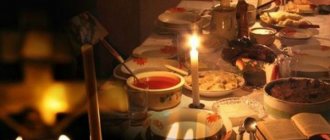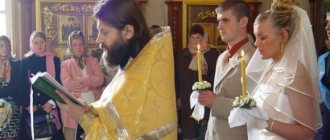From June 28 to July 11, Peter's Fast or Apostolic Fast lasts. This is the first multi-day fast of the summer. It is timed to coincide with the feast of Paul and Peter on July 12. The purpose of fasting is the physical and spiritual cleansing of a person. It is very important to celebrate the holiday of the two apostles and disciples of Christ with pure thoughts.
The essence of Petrov's fast
Petrov fast prepares Christians for the day of remembrance of the holy apostles Peter and Paul. It was installed in memory of how the apostles fasted before preaching Christianity. Its essence is to achieve self-improvement through voluntary abstinence. Through fasting, a person strives for spiritual and physical purity. Refusal of certain types of food, prayer, repentance, compassion and a humane attitude towards others helps to feel unity with God. Fasting also unites Christians and allows them to feel like they are part of the Church.
History of Petrov's Fast
The history of Peter's Fast goes back to the first centuries of Christianity. Initially, it was intended for people who, for some reason, could not fast during Lent. He was most revered in Constantinople and Rome, where churches were built and consecrated in honor of the apostles Peter and Paul. The final approval of the Apostolic Fast dates back to the end of the 4th - beginning of the 5th centuries. In Rus', the Petrov fast was introduced after the adoption of Christianity. He came to replace the pagan Kupala rituals.
As Christ commanded to fast: “Do not be sad”
However, even during repentance the Lord directly forbids despondency:
“Also, when you fast, do not be sad like the hypocrites, for they put on gloomy faces in order to appear to people as fasting. Truly I tell you, they are already receiving their reward.” (Matt. 6:16)
What is correct fasting?
“And you, when you fast, anoint your head and wash your face, so that you who fast may not appear to men, but to your Father who is in secret; and your Father, who sees in secret, will reward you openly” (Matthew 6:17-18).
And the point here is not only in appearance: ostentatious “fun” without inner joy cannot be demonstrated for a long time. And according to the word spoken back in pre-Christian times by King Solomon, “a cheerful heart makes a cheerful face” (Prov. 15:13).
This “cheerful heart” of believers began to distinguish Christian fasts already in the first centuries of the life of the young Church: abstinence became a holiday. Many especially value their spiritual state during fasting, knowing from experience how much joy prayer brings, combined with even small physical deeds.
Rules of conduct and traditions of Peter's Fast
Petrov's fast implies restrictions that are aimed at cleansing the body and soul of a person. During this period, it is necessary to abstain from certain types of food and daily activities that can lead to a sinful state.
- Meat, eggs and dairy products are excluded from the diet. On Wednesday and Friday it is also prohibited to eat fish and seafood, hot food seasoned with oil.
- Quitting alcohol and smoking. A small amount of wine is allowed on Saturday, Sunday and temple holidays.
- It is necessary to limit attendance at entertainment events. It is better to celebrate holidays with your family, without noisy feasts, dancing, songs and games.
- You should not allow bad thoughts, swear, quarrel with people around you, envy and judge.
- You should limit watching TV, using the Internet and social networks.
- According to church canons, the sacrament of marriage (wedding) is not performed during the period of fasting.
- It is forbidden to tell fortunes or perform magical rituals and ceremonies.
- Spouses are advised to refrain from intimate relationships and conceiving a child. It is permissible to perform marital duties by mutual consent.
FAQ
People who decide to fast often have questions about what can and cannot be done during Peter's Fast. Believers are concerned about:
- Are weddings allowed?
- Can I sew, knit or embroider?
- Are baptismal ceremonies performed?
The clergy do not recommend celebrating weddings during Lent. Weddings are not held during this period. In addition, a ban on fatty foods and entertainment will not allow the wedding to take place as expected.
It is also not recommended to do needlework, so as not to “sew up” your happiness. There are no prohibitions on performing the baptism ceremony; you can be baptized on any day.
Petrov, like other fasts, strengthens the spirit and faith, gives strength for purification. A period of abstinence makes life happier, allowing you to look inside yourself, into your soul.
What can you eat on Petrov fast: nutritional rules
Peter's Fast, unlike the Great Fast, is not so strict. During this period, you also cannot eat meat, dairy products, eggs, but fish is allowed on some days of the week. The basis of the Lenten table is greens and dishes made from them (cabbage soup, okroshka, botvinya), cereals, and berries.
During this fast, the consumption of hot food without oil is prescribed on Monday, fish is allowed on Tuesdays, Thursdays, Saturdays and Sundays, and dry eating (bread, water, salt, raw fruits and vegetables, dried fruits, nuts, honey) is allowed on Wednesdays and Fridays. Wine is allowed on weekends.
On the church holiday of the Nativity of John the Baptist (July 7), you can eat fish (regardless of what day of the week it falls on).
The Day of the Apostles Peter and Paul (July 12) is not included in Lent. However, if it falls on Wednesday or Friday, then it is fast (low degree of strictness - foods with oil and fish are allowed).
According to the monastic Charter, the above rules are mandatory for observance among monks. Laymen do not have to adhere to the strictness of fasting. Parishioners coordinate the nutrition calendar with spiritual mentors, taking into account all life circumstances, health conditions and body characteristics.
The article provides a calendar of the monastic Rules, which gives an idea of the degree of severity of fasting by day. Each person individually, together with his confessor, determines the degree of severity of his fast. People who have chronic diseases should first consult their doctor to prevent possible risks to the body.
For some categories of people, a relaxation of the fast is allowed: military personnel, students and people engaged in heavy physical labor. Pregnant and lactating women are exempt from gastronomic restrictions. It is better not to limit children to meat and dairy foods. Other dietary restrictions can be introduced for them. For example, give less sweets.
Supreme Apostles
Holy Chief Apostles Peter and Paul with Lives
So, during the first centuries of the existence of the Church, the fast dedicated specifically to Peter and Paul was apparently unknown. But the saints themselves, the “pillars of the Church,” were deeply revered by believers. Their special role can be seen already in the Gospel, as well as in the “Acts of the Apostles”, written by St. Luka.
The most zealous
It is not for nothing that Simon Peter, the most steadfast of the Lord’s disciples, was called by Him “the rock” in the foundation of the Church. In many chapters of the Gospel we see him constantly accompanying Christ in the most important moments of His earthly life:
- Simon was one of the first called by Christ to serve; without hesitation, according to the word of the Savior, he left his job as a fisherman, his home, his wife, and went to wander with Christ;
- he is one of the three disciples who were present at the resurrection of the Lord's daughter Jairus (Mark 5:35-43);
- Peter, and not any other of the frightened disciples, boldly asked the Lord, walking on the stormy sea, permission to also walk on the waters (Mark 6:47-51);
- the name of Peter is called by the Evangelists among those with whom the Lord went to the Mount of Transfiguration - Tabor, and the Apostle is named first (Matt. 17: 1-6; Mark 9: 1-8);
- Even at the Last Supper, Simon is the leader; he most ardently proves to Christ his readiness to go “to prison and to death” (Luke 22:33), and he tries more persistently than others to find out who will betray Christ.
Peter's zeal for God was great, but his fall was also terrible. When the Teacher was taken by the hands of the wicked, not long ago such a hot, fiery Simon denied Him three times.
Pious tradition says that the Risen Christ appeared to him, endlessly grieving over what he had done. And the Evangelist John (John 21:15) conveys the conversation of Christ with His disciple, a threefold questioning:
“Simone Ionin, do you love Me?”
Peter understands everything: why the Lord does not call him Peter (“petrus” - in Greek “stone”, a symbol of firmness), why he asks three times, according to the number of his denials. From the depths of his contrite heart his cry is heard:
"God! You know everything, You know that I love You!
This – love for God – determined his life until the very end. Having traveled many lands with the gospel, having visited Rome itself more than once, he never forgave himself for his renunciation: when the imperial authorities condemned the Apostle to crucifixion, Peter asked to hang him upside down so that the suffering and pain would become greater.
Teacher of the Gentiles
The mission of Paul turned out to be completely special (before the calling of the Lord - Saul). The Gospels do not mention his name even once, which is understandable. Having grown up among educated Jews, Saul was initially infinitely far from the followers of the preacher from Nazareth and the teachings that questioned many of the customs and traditions of Judaism.
Especially the believer, burning in spirit, Saul was outraged by the idea of Jesus as God coming to earth. “The Pharisee, the son of a Pharisee,” as he called himself, in excessive jealousy persecuted Christians as blasphemers, offenders of Jewish law.
Until one day, going to the Syrian city of Damascus to arrest the followers of the hated teaching, he, illuminated by a great light, saw Christ Himself - truly God and Man.
Saul didn’t just change his name to Paul—his life changed. Knowing well that a Jew is forbidden to even eat with pagans, Paul now goes to them, who never knew the true faith, lives among these people, communicates with them, baptizes many people.
St. Luke, Paul’s friend and companion, says that more than once the saint had to explain his actions to the Jerusalem Christians from the former Jews, and even sometimes argue with Peter about the possibility of observing the Law of Moses for the pagans.
Later, looking back on the years he had lived, Paul noticed with surprise how many communities he founded, how many people he led to the Lord:
“... I have labored more than all of them: not I, however, but the grace of God, which is with me” (1 Cor. 15:10).
The path of both saints ended in Rome. The Christians of the “Eternal City” remembered the date – July 12 (NS) 66 or 67 as the day of their execution. Until now, historians and theologians do not have a common opinion whether they were killed by order of Emperor Nero in 66, or several years between the death of Peter and the death of Paul.
But they were not simply remembered as people who had once lived: as during earthly life, believers continued to turn to their mentors who were in the Kingdom of Heaven. After all, for a Christian there is no death.
Veneration of the Apostles
By the time the anti-Christian persecution ceased under Emperor Constantine the Great (306-335), the Church had long ago developed a special attitude towards Peter, as the supreme disciple of Christ, and Paul, the “apostle of the pagans”. The reverence that Christians felt for the holy apostles begins to be expressed not only in prayer, but also in the construction of churches.
In Rome
In 324 or 326, Constantine the Great ordered the construction of a small church (basilica) on the site of the gardens of Emperor Nero, where the Apostle Peter suffered. The altar of the temple was built on the site of his grave, which had long been known and was revered by Christians for several centuries.
In those same years, a temple was built on the site of the execution of the Apostle Paul, outside the city limits, which was also known and revered by Christians.
18
November
324 years
The basilica in honor of the Apostle Paul was consecrated by St. Sylvester, Pope of Rome.
Currently, on the site of Peter's Basilica there is the famous St. Peter's Cathedral, St. Basilica. Paul is one of the 4 “great basilicas” (temples with a special status) of the “Eternal City”.
In Constantinople
After the capital of the empire was moved to a new city, Constantinople, special veneration for the apostles was manifested there as well. Around 330, the emperor ordered the construction of the Basilica of the Apostles here. This temple is the only one that appeared in Constantinople during the lifetime of its founder.
In 337, the king was buried here in a marble sarcophagus. His son, Constantius, brought here sacred relics - the relics of the apostles Andrew the First-Called, Luke and the disciple of St. Paul, Timofey.
Subsequently, the church became the family tomb of the Byzantine emperors. The patriarchs were buried here. In the 6th century, under Emperor Justinian, the basilica was greatly rebuilt and expanded: the king feared that the Apostolic Church might lose its significance against the backdrop of the magnificent Hagia Sophia.
The shape of the five-domed basilica, the second most important temple of Byzantium, became the prototype for many Christian churches. For example, this kind of architecture is still widespread in Russia. But the basilica itself has not survived to this day: since 1461, in its place has been the Fatih Mosque.
How to prepare and smoothly enter the fast
Petrov's fast is not strict. In the summer, there is an abundance of vegetables, fruits, and herbs on the tables, which allows you to eat varied and tasty without feeling hungry or uncomfortable. Petrov's fast does not require careful preparation, however, for people who are fasting for the first time or have a hard time with gastronomic restrictions, it is better to adhere to some rules:
- It is better to start preparing for fasting 1-2 weeks in advance. Gradually reduce meat and dairy products in your diet. Increase the proportion of vegetables and fruits.
- Get your body used to fiber. The basis of a lean diet is plant foods, which contain dietary fiber in large quantities. To avoid discomfort associated with digestion, eat salads daily and add bran or fiber to prepared meals.
- Drink enough fluids. Drinking 1.5-2 liters of clean water daily will improve intestinal function, eliminate dehydration and experience less hunger.
- Maintain the balance of intestinal microflora. A sudden change in diet can disrupt the microflora. To populate the intestines with beneficial bacteria, consume fermented milk products daily: starter cultures, bifidoyogurts and kefirs, fermented baked milk, yogurt.
- Lenten foods are lower in calories. In order not to feel hungry in the first days of fasting, you can increase portions, add additional meals or snacks of fruits, vegetables, and nuts.
What Holy Scripture tells us about spiritual and physical abstinence
The Old Testament already knows fasting. St. Basil the Great was one of the first to draw attention to the fact that fasting as self-restraint appeared already during the dwelling of the first people in Paradise. The commandment given to Adam forbade eating from one of the trees of paradise (Gen. 2:17). But man was unable to meet even this single requirement. After the Fall, restoring Communion with God requires much greater efforts from a person.
This was already understood by the ancient Jews, who began fasting at least since the time of the prophet Moses:
- in purifying oneself in the face of the holiness of God;
- in asking the Lord for help and mercy;
- in repentance for the sins committed.
The fasts of the Jewish tradition can be divided into:
- observed under special circumstances; for example, on Mount Sinai, the prophet, leader of the people of Israel Moses, “with the Lord for forty days and forty nights, he did not eat bread or drink water; and he wrote on the tablets the words of the covenant, the ten words” (Ex. 34:28);
- The residents of the city of Nineveh, which the prophet held, kept a penitential fast. Jonah predicted the Lord's punishment for their sins;
- prescribed abstinence on certain days; So, for the Jews, these were the 10th day of the month of Tisri (for the cleansing of sins), the 13th day of Adar - as a memory of the wife of the Persian king, the Jewish woman Esther, who saved her people from extermination, as well as others;
- a fast that an individual imposed on himself, usually under difficult circumstances requiring God’s help; An example of such spiritual work is the grief of King David over his sick son, who had to die for the sin of his father by the righteous judgment of God; The king poured out his grief in the psalm “Have mercy on me, O God, according to Your great mercy...” (Ps. 50)
In all these cases, in addition to special prayer, fasting also consisted of complete abstinence from food and drink. This generally accepted rule was also observed by the New Testament ascetics, an example set by Christ Himself, who observed complete abstinence for 40 days in the desert before the start of His preaching (Matthew 4: 1-2). It was because of this established tradition that the Church until the 4th century. I didn’t know multi-day fasts - maintaining such abstinence would be very difficult.
Fasting in the New Testament
With the coming of the Son of God into the world, the approach to abstinence began to gradually change. As before, fasting remained necessary in emergency circumstances requiring God's help. For example, to the disciples who, no matter how hard they tried, could not cure the demon-possessed youth, the Lord sternly says:
“This generation is driven out only by prayer and fasting” (Matthew 17:21).
"Sons of the Bridal Chamber"
And yet, something has changed, this was noticed by the Pharisees who were closely watching the Savior: the disciples of Christ did not observe the fasts established by Judaism. The Teacher’s answer to the lawyers’ perplexed question turned out to be discouraging for them:
“Can the sons of the bridal chamber fast when the bridegroom is with them? As long as the bridegroom is with them, they cannot fast” (Mark 2:19).
However, the Lord does not deny the doing itself, only explaining:
“But the days will come when the bridegroom is taken away from them, and then they will fast” (Matthew 9:15).
This is how the joy of meeting the Lord is brought into the work of fasting. To this day, Christians spend the time when He is especially close - Christmas, Easter, Pentecost - in spiritual joy, without fasting.











